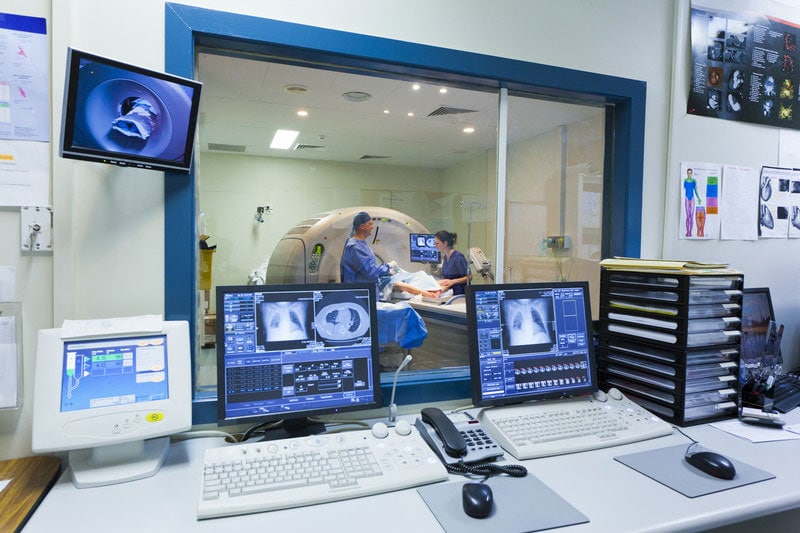ICD-10 and the Quality Payment Program (QPP) under MACRA which draws attention to the necessity to meet new quality performance standards have made clear, concise and complete radiology reporting more important than ever. Radiology services are under increasing scrutiny and the Office of Inspector General (OlG) reviews payments for high-cost diagnostic radiology tests to determine whether they were medically necessary. Therefore, focus on standardized documentation is critical to ensure accurate radiology medical billing and coding for maximum reimbursement.
Orders for Radiology Tests
Radiology services are provided on the basis of a diagnostic test order from the referring or ordering physician. Referring providers should:
- Provide a complete and accurate test order which indicates that the services are reasonable and necessary. CMS assigns the referring physician with the responsibility of documenting medical necessity (as part of the Medicare Conditions of Participation – 42 CFR 410.32).
- Avoid terms such as “Rule out”, “Possible”, “Probable” and “Suspected”
- Report the precise signs or symptoms that led to the radiology study being ordered such as ‘pain in the body area’, swelling in the body area, fever, shortness of breath, nausea, etc. As many indications as possible should be provided.
Radiology Reports – Essential Elements
Dictated radiology reports should meet American College of Radiology (ACR) guidelines. Essential elements include:
- Heading (study name)
- Number of views or sequences (name of views – what was done)
- Clinical indication (reason for exam)
- Body of report (findings)
- Impression or conclusion (synopsis of findings)
- Physician signature
- Diagnostic studies (plain films)
An article published in For the Record highlights that radiology documentation should:
- Clearly identify the exam performed, clinical indications, findings, and impressions.
- Use language that closely matches the CPT descriptors for the valid related code.
- Include additional subsections, such as technique and comparison, with separate and distinct data for each section.
Additional tips:
- Exam titles should not be listed in the findings section or impression.
- Clinical indications should be listed separately from the findings and impression.
- Exam titles should allow correct code assignment by including all necessary elements and modality (such as MRI, ultrasound, CT, X-ray), anatomical site, views, and whether contrast was used.
- Exams should be concise (for e.g., upright, oblique, decubitus views of the abdomen CT chest with and without contrast.
- Ambiguous, nonspecific, or unfamiliar terms or abbreviations should not be used in exam and clinical indication.
- When a study is being done due to pain, trauma or swelling, the location must be clearly stated. If studies are performed on multiple body areas, the appropriate specific diagnosis should be listed in each report.
- Complete documentation should be provided to support a complete exam.
- Documentation should precisely state the number of views.
Undercoding leads to lost revenue, while overcoding poses noncompliance risks. Poor or incomplete documentation can leave money on the table. Radiology medical coding service providers can assign the correct codes only if the documentation contains all the necessary details. Inadequate documentation can lead to lesser CPT codes and loss of reimbursement. Similarly, coding an exam incorrectly to reflect a higher-reimbursement CPT code not supported by the documentation will put the radiology practice at risk of noncompliance and monetary fines.
According to the Medicare AUC/CDS mandate for advanced medical imaging of Medicare outpatients, which takes effect on January 1, 2020, ordering providers must consult Appropriate Use Criteria (AUC) when ordering advanced imaging examinations such as MR, CT, PET and other nuclear medicine exams for Medicare patients. Although the CDS requirement relates to referring physicians, radiology practices will be responsible for documenting that CDS was used correctly by the referring physicians. Failure to comply will result in lost revenue. The denial of payment will be applicable to both the professional and technical components of the Medicare reimbursement, regardless of whether the procedure is billed separately or globally.
Medical Billing Outsourcing – A Viable Option to Optimize Reimbursement
Outsourcing radiology medical billing and coding can promote adherence to best practices, industry standards, and compliance with new quality reporting measures. A Radiology Today report notes that the increased complexity of the rules has made it difficult for smaller practices to meet the requirements on their own. Tom Greeson, JD, an attorney and partner with Reed Smith LLP recommends that radiology groups are better off by either becoming part of a bigger, more sophisticated group or contracting with expert third-party radiology billing companies that are knowledgeable about the rules and can help them bill and report in a way to avoid significant payment penalties in the out years.
An efficient medical billing service provider can help radiology practices maximize revenue. They have proper processes and safeguards in place to validate receipt of interpretation reports and ensure accurate coding, clean claim submission, and effective and timely denial management.




